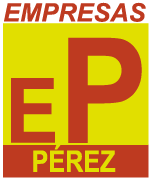The first step to a successful meeting is to design an agenda that is effective. The agenda for board meetings do not need to be a standard document that is used each time. Use the agenda to adapt the way you conduct your meetings to get the most value for your board.
The agenda for the board meeting should clearly define the purpose of the meeting to ensure that there is no waste of time and ensure that all relevant topics are covered. The agenda should also include the attendees required and optional in https://boardroomstudios.com/ order to plan for the meeting accordingly. It is recommended to communicate the agenda with board members prior to the meeting so that they have time to review the topics and prepare for your meeting.
It is essential to include an agenda section for new business to ensure that board members can bring up any issues or concerns that were not discussed at the previous meeting. The old business section also allows board members to go over any issues that are not resolved and decide on what to do regarding the issues. It is also helpful to include a report from a committee section on the agenda for board meetings to allow the board to receive valuable insights from various committees on particular aspects of their work.
Finally, the last item of the agenda for board meetings is a chance for the Board to discuss the items that weren’t on the Consent Agenda and to formally take action to approve the meeting’s minutes. This will allow for the elimination of any contradictions in the minutes of the meeting and help ensure accountability.

Leave A Comment